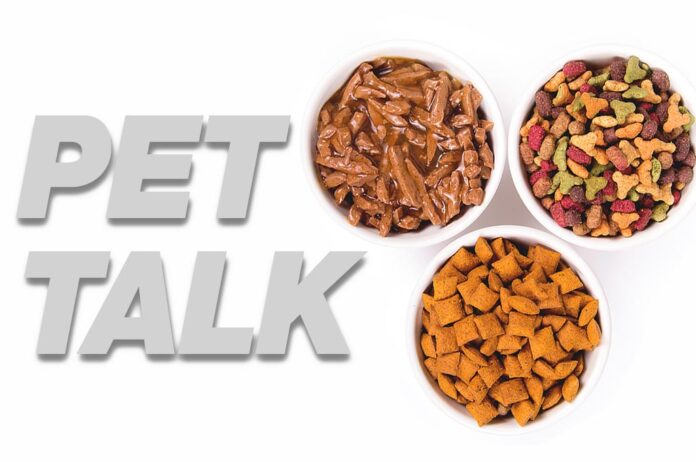It’s official; it’s the time of year that we are officially in “kitten season”! Although cats can have litters any time of year, most breeding happens in the spring and summer months, so it seems appropriate to talk about kittens this month. If you are bringing in a kitten, or, if you already have a cat, perhaps this may be interesting to you! First, let’s start with where cats originated from. The lineage of the domestic cat has been confusing, however, there is promising evidence that all cats share a common ancestor to the North African/Southwest Asian wildcat, Felis silvestris lybica. When you have a moment, look up “African wildcat,” and you cannot deny the resemblance to the super cute felines we have in our homes today. Over time, cats were used as rodent killers on ships traveling from continent to continent, thus introducing this wild, desert feline across the world.
These predatory felines are what we call Obligate Carnivores. Simply, cats must eat meat to survive. Unlike herbivores (plant eaters) and omnivores (plant and meat eaters=dogs and humans), cats lack the enzyme amylase required to break down plants (carbohydrates) in their mouths. In addition, cats have evolved to get all the nutrients and water solely from the animals they eat.
It is no longer new news to try and rid the dry (kibble) foods from a cat’s diet. Why no kibble? All dry, even the best ones like the ones in my store, contain a minimum of 25% carbohydrates. Some really low-quality ones are over 50 percent carbs. Also, dry foods are, well, dry. Cats must drink water to process their food, which is against their nature. Urinary tract issues and kidney issues are very common, partially because of the nature of the food cats are eating. Until a true shift in pet health is taken to create only species-specific pet foods, it’s a lose-lose option for pet owners when they choose a kibble-only diet for their meat-eating felines.
If there is just one decision a cat owner can make very early on that could have the greatest impact on a healthy lifestyle, pet professionals would largely agree that it would be to limit dry food and offer high-quality wet foods that are free of fillers like by-products and starches.
Many of the cat owners I see are open to the idea of wet food for part of the time, but more often than not, I hear these two comments:
- “I don’t give too much wet food because
it’s bad for their teeth,” and - “I don’t want to spoil them.”
The truth is, dry foods are like crunching on a chip. Chips cannot clean teeth! And the carbohydrates break down into sugars which are terrible for teeth. And what is spoiling when your feline needs the nutrition found only in a meat-only diet?
Many cat owners come to my store in worry when their cats consistently turn down food, looking for the “best food that most cats like.” It’s a valid question, but the answer is never that easy. Even though domesticated, cats are being ruled by their genetics of being hunters and meat-eaters. The cats I consistently hear doing the best in terms of eating well are the ones being offered a variety of wet foods (wet includes canned, raw and lightly cooked). This isn’t to mean that there aren’t cats doing great eating the same foods every day, but overall, the cats being labeled picky are simply not getting what they need at that time.
When you get a kitten, it’s the best time to start their nutrition plan with wet foods only and begin offering various proteins, brands, and textures (pate/smooth vs. shredded) of foods. I often hear that cats eating variety are eating more consistently, and it simply makes sense.






















